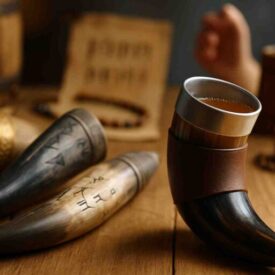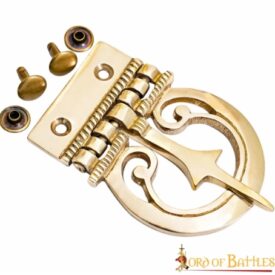Legend has it that on ancient nights the smoke of aromatic herbs rose like a bridge between the everyday and the sacred. That smoke was drawn through small vessels, reeds, or conduits which, centuries later, would take the form of the pipes we now associate with ritual, reflection, and craftsmanship. If you want to truly understand what the term “pipas fumar” means, its history, and how to choose, care for, and appreciate a pipe, you’ve come to the right place.
In this article you will learn how pipes appear in the archaeological record, which materials and styles are most representative, how they were smoked in the Middle Ages, and why the pipe remains a cultural and sensory object today. You will also find comparative tables, practical steps for lighting and maintaining a pipe, and a section dedicated to replicas and accessories.
Timeline of the smoking pipe
| Period | Event |
|---|---|
| Prehistory and Antiquity | |
| Origins (Prehistory) | Evolution since Prehistory in shape and materials (stone, ivory, reed, metal, clay, meerschaum, corn, wood, etc.). Early pipes possibly “ground-based” or “brazier-type” for smoking hemp or aromatic herbs. |
| 3rd millennium BC | Documented consumption of opium and cannabis among Sumerians, Egyptians, Babylonians, Akkadians and Chinese, probably via pipes. |
| Ancient Greece and Rome | Use of pipes to smoke herbs for therapeutic purposes; Roman mosaics show people smoking pipes (e.g. Pompeii). |
| Over 2000 years ago (Mesoamerica) | Earliest evidence of pipe use in Mesoamerican cultures to smoke tobacco in religious ceremonies. |
| Middle Ages and Early Middle Ages | |
| 11th century | Discovery in Córdoba of three ceramic pipe bowls dated to this century. |
| Medieval period | Sculptural representations show figures with pipes. |
| 15th–16th centuries | |
| Late 15th century (1492) | Tobacco arrives in Europe from the Americas; Rodrigo de Jerez, a sailor who accompanied Columbus, introduces the custom of smoking in Spain and is imprisoned by the Inquisition in Barcelona. |
| Early 16th century | The pipe becomes closely linked with tobacco in Western Europe; tobacco is attributed medicinal uses. |
| Mid-16th century | Spread of tobacco in France after Catherine de’ Medici used snuff for headaches. |
| Late 16th century | Clay pipe manufacturing begins in England; anecdote of Sir Walter Raleigh’s servant throwing water when he saw him smoke. |
| 17th century | |
| 17th century | Pipe smoking becomes common practice in Europe and a symbol of social status; clay pipes are popular. |
| 1603 | James I succeeds Elizabeth in England and his opposition to tobacco causes persecutions, prompting many to carry techniques to the Netherlands and France. |
| 1618–1648 | Thirty Years’ War: rise and spread of Dutch pipes across Europe. |
| Development of clay pipes | Early bowls were very small due to the high cost of tobacco; as prices fell, bowls grew larger. Clay pipes remain popular through the 17th and 18th centuries. |
| 18th century | |
| 18th century | The world’s first tobacco factory is established in Seville; clay pipes are produced and popularized in Spain (Basque Country, Catalonia, Balearics). Short period of popularity for porcelain pipes in France, Germany and Austria. Introduction in the Netherlands of a horse-powered clay kneading mill. |
| 19th century | |
| 19th century | Popularization of briar wood for pipes for its durability and absorbent properties; St. Claude and Le Muy (France) become industrial centers. Rise of Dutch pipes; more elaborate clay bowls used as advertising. Clay pipe production is mechanized and part of output is used for children’s toys. |
| Mid-19th century | The horse-powered clay kneading mill is replaced by an engine. |
| 1860–1880 | A Frenchman discovers the usefulness of briar (Erica arborea) as an ideal material for pipes. |
| 20th century | |
| 1913 | Production of a pipe whose bowl represents an “8” in support of the eight-hour workday. |
| 1960s | Introduction of plastic, bakelite and resin pipes on the market. |
| 1963 | Use of pyrolytic graphite to line plastic bowls. |
| 1966 | S. M. Frank develops Brylon, a high-temperature resin mixed with wood flour and parts of briar root, for the Médico brand. |
| 1970s (mid) | Pyrolytic graphite stops being produced for pipes. |
| 1970 | The Turkish government bans the export of raw meerschaum; since then it has only been exported manufactured. Meerschaum deposits are identified in Africa (Great Lakes) but are of lower quality and today practically non-existent. |
| Late 20th century | Briar pipes and block-carved meerschaum pipes come to be regarded as highest quality. |
| 21st century (Today) | |
| Present | Smoking pipes remain a cultural element associated with sophistication and leisure; pipe smoking is perceived as an active meditation and ritual. A resurgence with hipster culture and interest in traditional crafts. |
Archaeological trace: pipes in Al-Andalus and beyond
The presence of pipes at some sites from the Al-Andalus period is significant and shows extensive trade within the Islamic world, especially in the 13th century, indicating that the habit of pipe smoking was common, as evidenced by the growing number of preserved specimens.
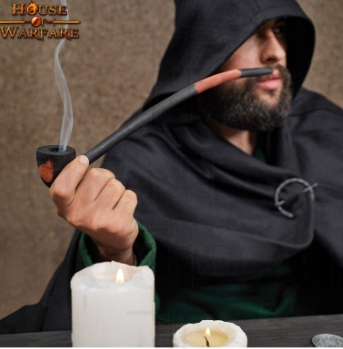
Hispano-Muslim smoking pipes display a wide variety, from simple spherical bowls to pipes with more complex external decoration. But in general they follow a very similar model: shapes, size or decoration may change, but they keep the same structure.
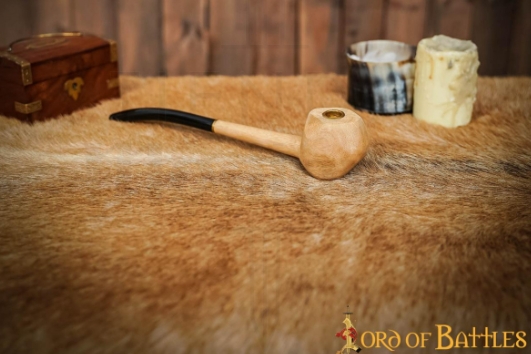
In general they can be divided into two parts: a furnace or bowl, which is the part where the smoking substance was burned; and a mouthpiece, a conduit that served as the draw and where the stem fitted, which was quite thin to facilitate suction. These stems would have been made of an organic material, possibly wood or reed.
What “pipas fumar” means today and why it matters
When we write or search for “pipas fumar” we mainly refer to the act of consuming tobacco by pipe, but also to a cultural universe that includes rituals, tobacco blends, tools and artisanal knowledge passed down through generations.
Pipe smoking is not just nicotine: it is patience, method and contemplation. It is a sensory experience where every blend, every lighting and every puff tells a story. And that same story sinks its roots into traditions older than tobacco itself.
The pipe as ritual
The ritual of preparing and smoking a pipe turns a daily action into a moment of pause. From cutting the tobacco to packing and lighting, each step is part of a choreography that demands attention and calm.
Risks and responsibility
It is important to remember that smoking any tobacco product carries health risks. Although the experience can be less frequent and involve less pulmonary inhalation than cigarettes, risks of addiction, cancer and cardiovascular and oral diseases exist and should be taken into account.
Types of pipes and materials: a comparative table
The choice of materials influences aesthetics, durability and the smoke. Below is a comparative table of the most representative materials:
| Material | Advantages | Disadvantages | Smoking profile |
|---|---|---|---|
| Briar (Erica arborea) | High heat resistance; porous and absorbent; noble finish; current standard. | Higher price than clay; requires good carving. | Dry, balanced smoke; preserves the tobacco flavor. |
| Clay | Neutral to odor; economical; historical tradition. | Fragile; warms the hand more; small bowls in older models. | Pure, clean flavor; ideal for light blends. |
| Meerschaum (sea foam) | Fine carving; changes color with use; excellent neutrality. | Expensive and scarce material; requires care. | Very dry and aromatic smoke; ideal for delicate blends. |
| Wood (not briar) | Warm appearance; good for historical replicas; lightweight. | May contribute its own notes; less heat resistant. | Warmer, more aromatic profile; depends on the wood. |
| Metal and glass | Durability; contemporary aesthetics; easy cleaning. | Transmit heat; may alter flavor. | More direct, bright smoke; modern. |
Classic shapes and their influence on smoking
The design of the bowl and stem affects draw and smoke perception. Some classic shapes:
- Bent/Bulldog: Comfort and balance between bowl and mouthpiece.
- Churchill/Prince: Elongated bowls for long smokes.
- Calabash: Associated with a dry smoke thanks to its separate chamber.
How people smoked in the Middle Ages: herbs, practices and context
The expression “pipas fumar” applied to the medieval period requires nuance. American tobacco did not yet exist, but there were pipes and devices to smoke herbs, hemp, opium or therapeutic blends. Some archaeological finds, mosaics and sculptures confirm that drawing smoke through conduits was a known practice.
In Al-Andalus and other Mediterranean centers, ceramic bowls and reed or wood mouthpieces were used. Mouthpieces, often organic, facilitated suction. The device could serve ritual, medicinal or purely recreational functions.
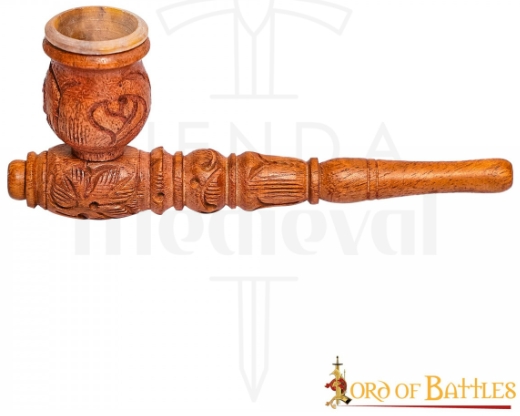
Smoking pipes: replicas and accessories
For those who recreate historical scenes or seek a pipe with a medieval look, wooden or ceramic replicas respect documented shapes and sizes while retaining functionality and appearance. When choosing a replica, pay attention to the mouthpiece material and the draw to achieve a smoke faithful to the original design.
Historical mouthpieces vs. modern ones
Historical mouthpieces were usually made of reed, wood or bone. Today ebonite, acrylic or combinations are used to improve comfort and durability. If you seek authenticity, a well-treated wooden mouthpiece respects the look and offers a warm experience.
How to light, smoke and clean a pipe: step-by-step guide
Mastering the art of pipe smoking is learning a choreography of small gestures. Here are practical steps from packing to cleaning.
Preparation and packing
- Cut or crumble the tobacco according to the manufacturer’s recommendation.
- Fill the bowl in three gentle stages: first layer loose, second denser, third firm but not overly compact.
- Leave a small gap between the tobacco and the rim to allow good combustion.
Lighting and keeping the ember
- Use a long match or a butane lighter. Avoid lighters with very high flames that char the tobacco.
- Perform an initial lighting and let the entire surface catch; tamp down and repeat to achieve an even layer (initial “tamping”).
- Keep the pipe lit with gentle puffs; if it goes out, gently tamp and relight.
Breathing and technique
The experience does not require pulmonary inhalation. Keep the smoke in the mouth, taste it and expel it. Puffs should be slow and paced; rushing ruins the smoke and can overheat the pipe.
Cleaning and care
- After each smoke, remove ash and run a cleaner through the stem.
- Let the pipe rest at least 24 hours between uses so moisture can evaporate.
- Perform a deep cleaning with alcohol and pipe cleaners after a certain number of uses (in moderation and depending on the material).
Maintenance of historical replicas and conservation
Wooden or ceramic replicas require respectful handling. Avoid sudden temperature changes that could crack the piece. For clay pipes handle with care due to their fragility. For wood apply specific oils periodically to preserve the grain and prevent drying.
Practical recommendations
- Store pipes in a dry, ventilated place.
- Do not clean the pipe while hot; wait until it cools.
- If the pipe smells odd after a restoration, let it air out for several days before use.
Choosing your first pipe
If this is your first encounter with this world, look for a medium-sized briar pipe. It offers versatility and a forgiving smoke for different blends. Avoid starting with extremely cheap or overly ornate pieces: the ideal is a solid pipe with good draw and a comfortable mouthpiece.
Tips for beginners
- Try different blends before settling on a favorite.
- Learn to “break in” the pipe: use it moderately the first weeks to build a natural protective layer in the bowl.
- Consult experienced smokers or reenactment communities for advice on blends and maintenance.
The pipe as a cultural object: symbol and aesthetics
The pipe has been a symbol of meditation, authority and style. In stories and portraits it appears associated with the wise man, the traveler and the artisan. In historical reenactment contexts, a well-chosen pipe adds authenticity and connects the wearer with ancestral practices of pause and contemplation.
Remember that “pipas fumar” is not just a technical search: it is an invitation to understand the cultural continuity that links civilizations that drew smoke to soothe, sacrifice or converse.
Summary of key takeaways
- History: Pipes have millennial origins and reach medieval Europe in very diverse forms.
- Materials: Briar, clay and meerschaum stand out for their properties; wood offers historical replicas with warmth and character.
- Ritual: Pipe smoking is slow and ritualistic; it requires technique and patience.
- Health: There are risks; act responsibly.
- Maintenance: Regular cleaning and rest to ensure a long life for the pipe.
From the ceramic bowl found in Córdoba to the briar pipe that accompanies a modern smoker, history and technique intertwine. Smoking pipes are objects that condense tradition, craftsmanship and sensory experience in every puff. Keeping them clean, respecting their material and knowing their history will allow you to enjoy them with honesty and discernment. Cherish the patience of the ritual and let each smoke be, above all, a moment to observe and remember.




